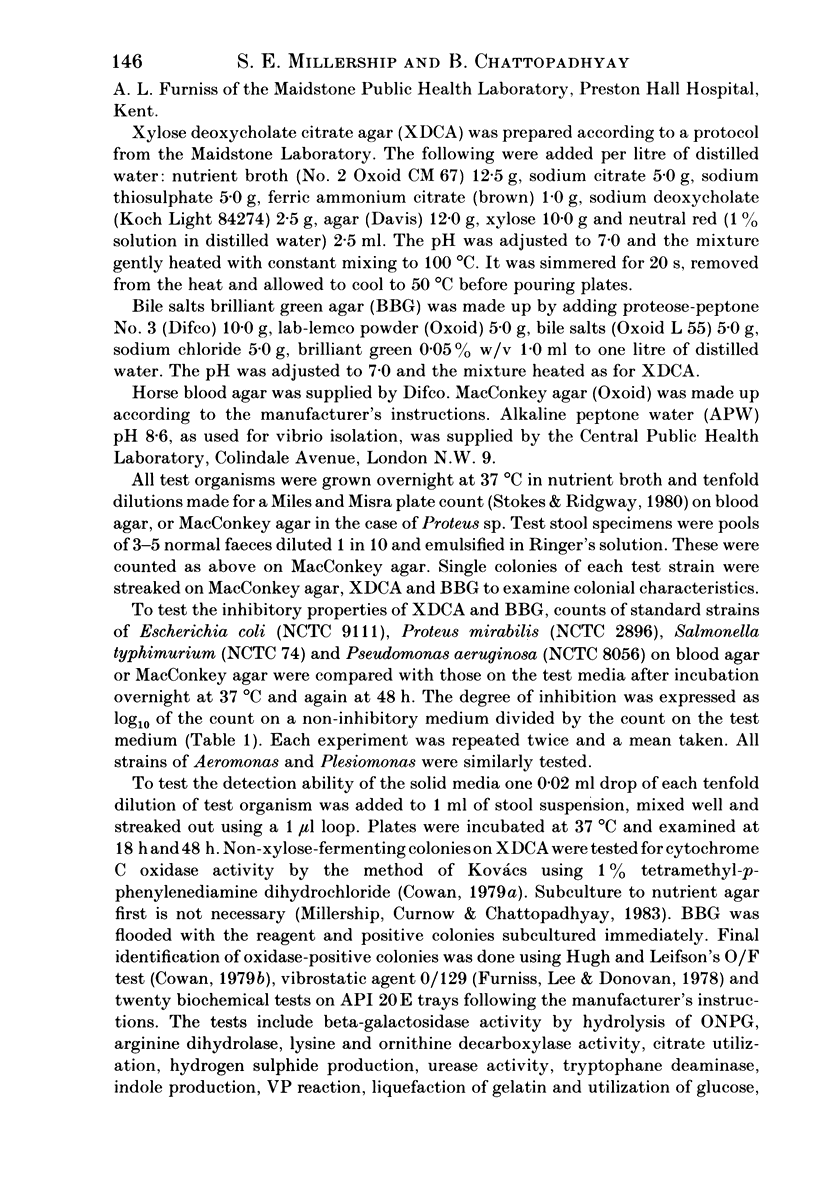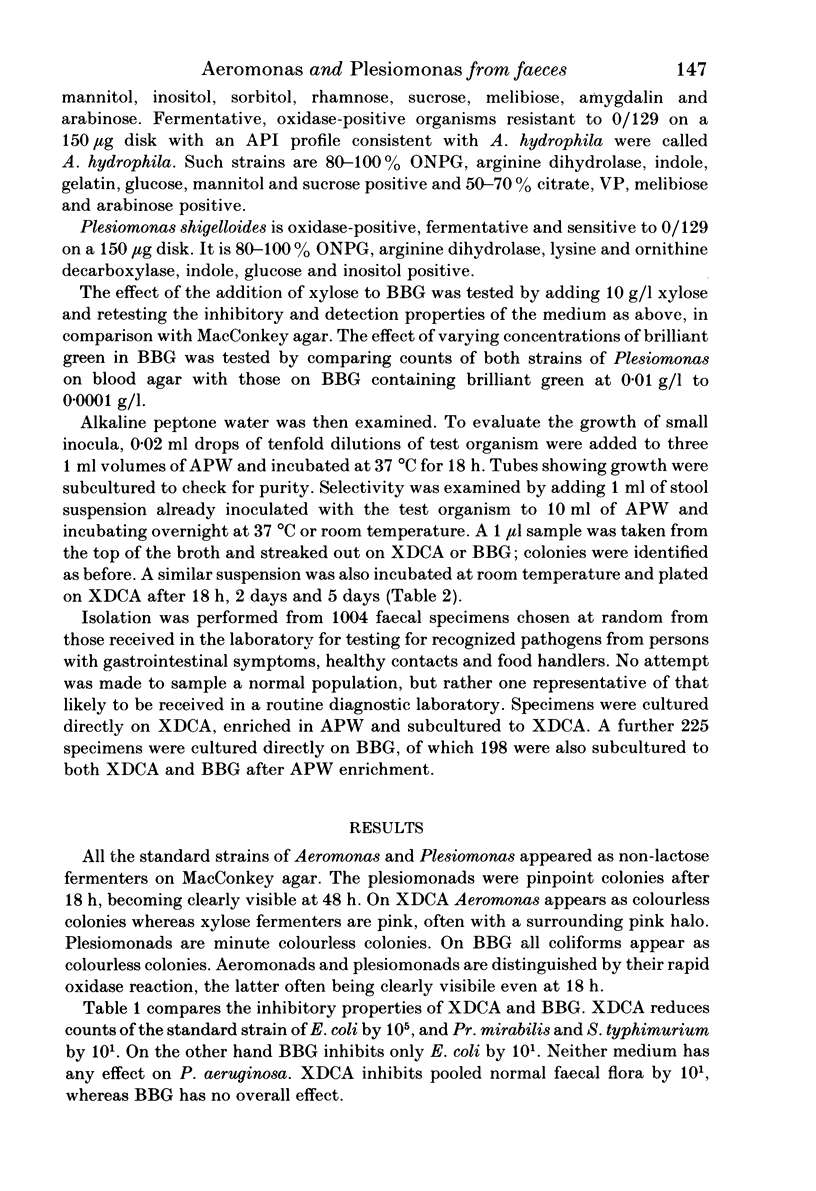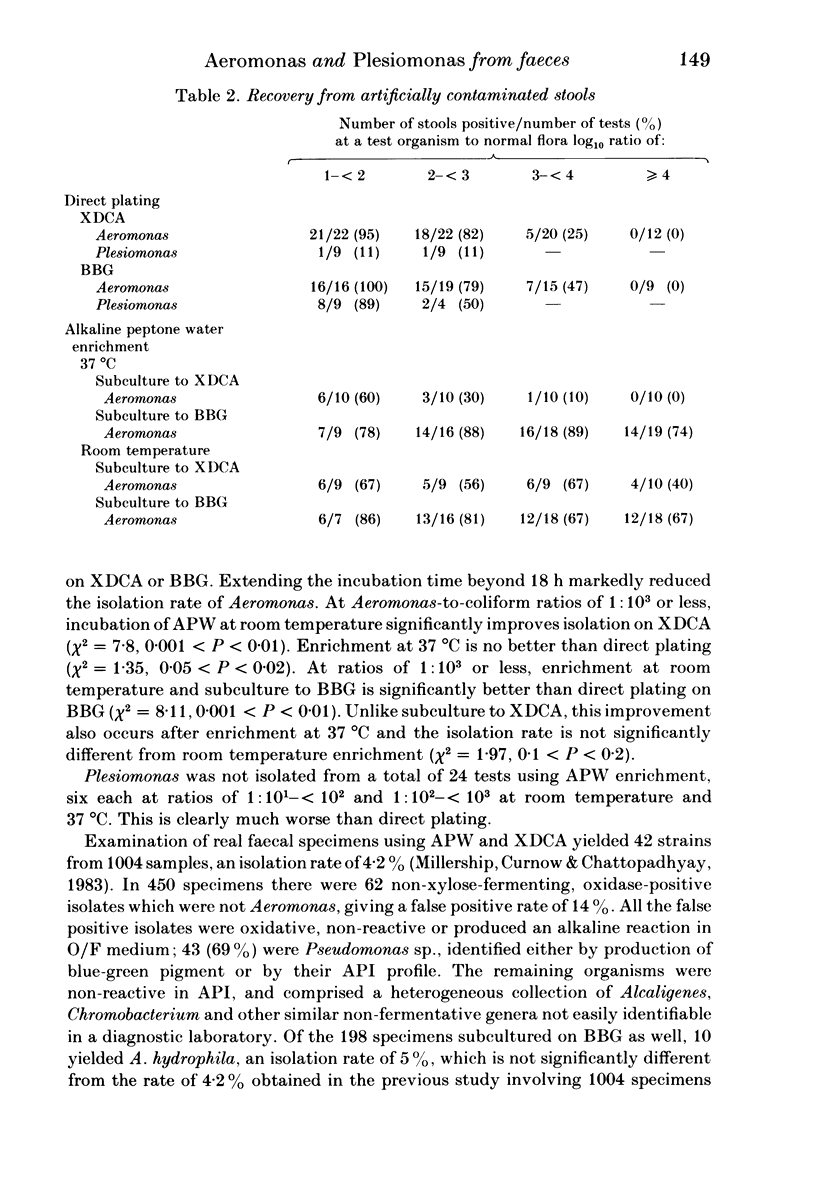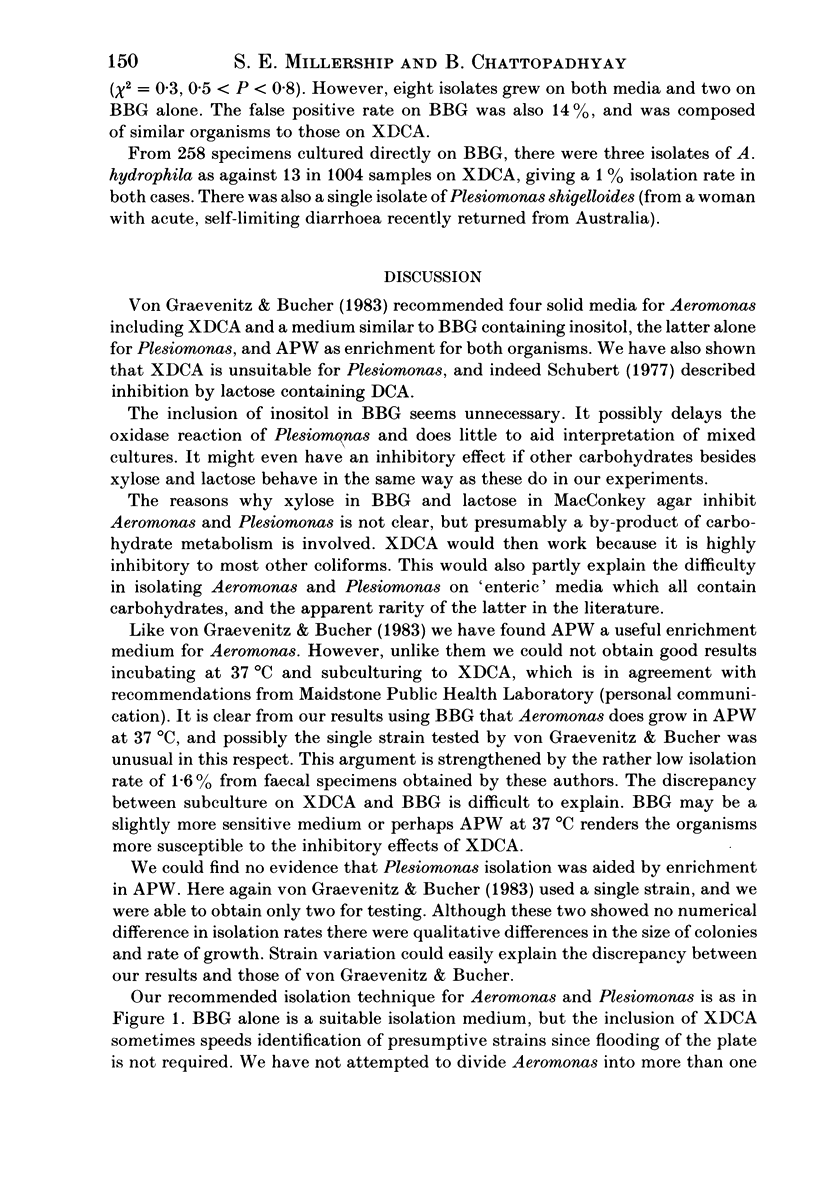Abstract
Two solid selective media, xylose deoxycholate citrate agar (XDCA) and bile salts brilliant green agar (BBG) and an enrichment broth-alkaline peptone water, were evaluated for the isolation of Aeromonas hydrophila and Plesiomonas shigelloides. Alkaline peptone water and XDCA are useful for recovery of Aeromonas but not Plesiomonas, whereas BBG is satisfactory for both organisms.
Full text
PDF







Selected References
These references are in PubMed. This may not be the complete list of references from this article.
- Bhat P., Shanthakumari S., Rajan D. The characterization and significance of Plesiomonas shigelloides and Aeromonas hydrophila isolated from an epidemic of diarrhoea. Indian J Med Res. 1974 Jul;62(7):1051–1060. [PubMed] [Google Scholar]
- Catsaras M., Buttiaux R. Les Aeromonas dans les matières fécales humaines. Ann Inst Pasteur Lille. 1965;16:85–88. [PubMed] [Google Scholar]
- Chatterjee B. D., Neogy K. N. Studies on Aeromonas and Plesiomonas species isolated from cases of choleraic diarrhoea. Indian J Med Res. 1972 Apr;60(4):520–524. [PubMed] [Google Scholar]
- Cooper R. G., Brown G. W. Plesiomonas shigelloides in South Australia. J Clin Pathol. 1968 Nov;21(6):715–718. doi: 10.1136/jcp.21.6.715. [DOI] [PMC free article] [PubMed] [Google Scholar]
- Davis W. A., 2nd, Kane J. G., Garagusi V. F. Human aeromonas infections: a review of the literature and a case report of endocarditis. Medicine (Baltimore) 1978 May;57(3):267–277. [PubMed] [Google Scholar]
- Gracey M., Burke V., Robinson J. Aeromonas-associated gastroenteritis. Lancet. 1982 Dec 11;2(8311):1304–1306. doi: 10.1016/s0140-6736(82)91510-0. [DOI] [PubMed] [Google Scholar]
- Millership S. E., Curnow S. R., Chattopadhyay B. Faecal carriage rate of Aeromonas hydrophila. J Clin Pathol. 1983 Aug;36(8):920–923. doi: 10.1136/jcp.36.8.920. [DOI] [PMC free article] [PubMed] [Google Scholar]
- Paucková V., Fukalová A. Occurrence of aeromonas hydrophila and aeromonas shigelloides in feces. Zentralbl Bakteriol Orig. 1968 Mar;206(2):212–216. [PubMed] [Google Scholar]
- ROSNER R. AEROMONAS HYDROPHILA AS THE ETIOLOGIC AGENT IN A CASE OF SEVERE GASTROENTERITIS. Am J Clin Pathol. 1964 Oct;42:402–404. doi: 10.1093/ajcp/42.4.402. [DOI] [PubMed] [Google Scholar]
- Rogol M., Sechter I., Grinberg L., Gerichter C. B. Pril-xylose-ampicillin agar, a new selective medium for the isolation of Aeromonas hydrophila. J Med Microbiol. 1979 May;12(2):229–231. doi: 10.1099/00222615-12-2-229. [DOI] [PubMed] [Google Scholar]
- Von Graevenitz A., Mensch A. H. The genus aeromonas in human bacteriology report of 30 cases and review of the literature. N Engl J Med. 1968 Feb 1;278(5):245–249. doi: 10.1056/NEJM196802012780504. [DOI] [PubMed] [Google Scholar]
- von Graevenitz A., Bucher C. Evaluation of differential and selective media for isolation of Aeromonas and Plesiomonas spp. from human feces. J Clin Microbiol. 1983 Jan;17(1):16–21. doi: 10.1128/jcm.17.1.16-21.1983. [DOI] [PMC free article] [PubMed] [Google Scholar]
- von Graevenitz A., Zinterhofer L. The detection of Aeromonas hydrophila in stool specimens. Health Lab Sci. 1970 Jul;7(3):124–127. [PubMed] [Google Scholar]


